Key Takeaways
1. Kubernetes: The Foundation for Cloud-Native Applications
Kubernetes is a container orchestration platform that forms the foundation of other platforms built on top of it.
Distributed primitives. Kubernetes introduces a new set of distributed primitives for building cloud-native applications. These include Pods (groups of containers), Services (for networking and load balancing), and various controllers for managing application lifecycle. These primitives provide a higher level of abstraction compared to traditional in-process building blocks, allowing developers to focus on application logic rather than infrastructure concerns.
Declarative approach. Kubernetes adopts a declarative model where developers specify the desired state of their applications, and the platform continuously works to maintain that state. This approach simplifies application management and enables automated healing and scaling. Key Kubernetes concepts include:
- Containers: Packaged, isolated units of application code and dependencies
- Pods: The smallest deployable units, consisting of one or more containers
- Services: Stable network endpoints for accessing groups of Pods
- Labels and Annotations: Metadata for organizing and selecting resources
- Namespaces: Virtual clusters for resource isolation and multi-tenancy
2. Foundational Patterns: Building Blocks for Containerized Apps
To be fully automatable, a cloud-native application must be highly observable by allowing its state to be inferred so that Kubernetes can detect whether the application is up and whether it is ready to serve requests.
Predictable Demands. Applications should declare their resource requirements and runtime dependencies. This enables Kubernetes to make intelligent decisions about placement and scaling. Key aspects include:
- Resource Profiles: Specifying CPU and memory requests and limits
- Quality of Service (QoS) classes: Best-Effort, Burstable, and Guaranteed
- Pod Priority: Indicating the relative importance of Pods
Declarative Deployment. Kubernetes provides mechanisms for updating applications with minimal downtime:
- Rolling updates: Gradually replacing old Pods with new ones
- Blue-Green deployments: Switching traffic between two versions
- Canary releases: Gradually increasing traffic to a new version
Health Probes and Managed Lifecycle. Applications should implement health checks and respond to lifecycle events:
- Liveness probes: Detecting if an application is running
- Readiness probes: Determining if an application is ready to serve traffic
- Lifecycle hooks: Responding to start and stop events
3. Behavioral Patterns: Pod Management and Service Discovery
The Singleton Service pattern ensures only one instance of an application is active at a time and yet is highly available.
Job Management. Kubernetes provides abstractions for managing different types of workloads:
- Batch Jobs: For running finite, completable tasks
- Periodic Jobs (CronJobs): For scheduled, recurring tasks
- Daemon Services: For running system-level services on every node
Stateful Services. Kubernetes offers StatefulSets for managing applications that require stable network identities and persistent storage:
- Ordered deployment and scaling
- Stable network identities
- Persistent storage per Pod
Service Discovery. Kubernetes provides multiple mechanisms for service discovery:
- ClusterIP Services: For internal communication
- NodePort and LoadBalancer Services: For external access
- Ingress: For HTTP-based routing and load balancing
4. Structural Patterns: Organizing Containers within Pods
A Sidecar container extends and enhances the functionality of a preexisting container without changing it.
Multi-Container Pods. Kubernetes allows multiple containers to be grouped into a single Pod, enabling various patterns:
- Init Containers: For initialization tasks before the main container starts
- Sidecars: For adding functionality to the main container
- Adapters: For standardizing output from heterogeneous applications
- Ambassadors: For proxying communication with external services
These patterns promote separation of concerns, modularity, and reusability in application design. They allow developers to compose complex applications from simpler, single-purpose containers while leveraging the shared context and resources provided by the Pod abstraction.
5. Configuration Patterns: Adapting Applications for Various Environments
ConfigMaps and Secrets allow the storage of configuration information in dedicated resource objects that are easy to manage with the Kubernetes API.
Externalized Configuration. Kubernetes provides several mechanisms for managing application configuration:
- Environment Variables: For simple key-value pairs
- ConfigMaps: For non-sensitive configuration data
- Secrets: For sensitive information (e.g., passwords, API keys)
Immutable Configuration. To ensure consistency across environments, configuration can be packaged into immutable container images:
- Configuration containers: Dedicated images for storing configuration data
- Init containers: For copying configuration into shared volumes
Configuration Templates. For complex configurations that differ slightly between environments:
- Template processing: Using tools like Gomplate to generate configuration files
- Init containers: For processing templates during Pod initialization
These patterns enable developers to separate configuration from application code, promoting portability and reducing the risk of environment-specific issues.
6. Advanced Patterns: Extending Kubernetes and Managing Complex Workloads
An operator is a Kubernetes controller that understands two domains: Kubernetes and something else. By combining knowledge of both areas, it can automate tasks that usually require a human operator that understands both domains.
Controllers and Operators. Kubernetes can be extended to manage complex applications:
- Controllers: For implementing custom behavior based on resource changes
- Operators: For encoding domain-specific knowledge and automating complex operations
- Custom Resource Definitions (CRDs): For defining new resource types
Frameworks and Tools. Several projects facilitate the development of controllers and operators:
- Operator Framework: For building Go-based operators
- Kubebuilder: For scaffolding and managing operator projects
- Metacontroller: For implementing operators in any language
These patterns enable developers to extend Kubernetes' functionality and automate complex, application-specific operations within the cluster.
7. Scaling and Building: Elastic Applications and In-Cluster Image Creation
Autoscaling in Kubernetes allows us to define a varying application capacity that is not fixed but instead ensures just enough capacity to handle a different load.
Elastic Scale. Kubernetes provides multiple mechanisms for scaling applications:
- Horizontal Pod Autoscaling (HPA): Adjusting the number of Pod replicas
- Vertical Pod Autoscaling (VPA): Modifying resource requests and limits
- Cluster Autoscaling: Adding or removing nodes based on resource demand
Image Building. Kubernetes can be used to build container images within the cluster:
- OpenShift Build: An integrated system for building images using various strategies
- Knative Build: A Kubernetes-native building framework
- Daemonless builds: Tools like img, buildah, and Kaniko for rootless image creation
These patterns enable developers to create elastic, self-adjusting applications and streamline the image building process by leveraging Kubernetes' scheduling and resource management capabilities.
Last updated:
FAQ
What's Kubernetes Patterns about?
- Focus on Cloud-Native Applications: Kubernetes Patterns by Bilgin Ibryam and Roland Huß is a guide to designing cloud-native applications using Kubernetes, emphasizing scalable, resilient, and manageable applications.
- Reusable Design Elements: The book highlights reusable elements for application design, offering practical solutions to common deployment challenges on Kubernetes.
- Real-World Use Cases: It draws from real-world experiences to illustrate effective application of patterns, making it valuable for both new and experienced Kubernetes users.
Why should I read Kubernetes Patterns?
- Enhance Kubernetes Skills: Ideal for developers aiming to deepen their understanding of Kubernetes and improve application design skills with best practices and proven patterns.
- Learn from Experts: Written by experienced practitioners, it encapsulates lessons from various projects, providing readers with extensive knowledge in cloud-native application design.
- Practical Guidance: The patterns are actionable and applicable to real-world scenarios, serving as a practical guide for cloud-native development.
What are the key takeaways of Kubernetes Patterns?
- Understanding Kubernetes Concepts: Covers essential concepts like Pods, Services, and Deployments, providing a solid foundation for building robust applications.
- Design Patterns for Apps: Introduces patterns like Predictable Demands and Health Probes, crucial for creating scalable and maintainable applications.
- Advanced Topics: Delves into advanced patterns like Operators and Controllers, essential for extending Kubernetes functionality and managing complex applications.
What are the foundational patterns discussed in Kubernetes Patterns?
- Predictable Demands: Emphasizes declaring resource requirements for containers to help Kubernetes make informed scheduling decisions.
- Declarative Deployment: Focuses on deployment strategies like Rolling Updates and Blue-Green Deployments for managing application updates with minimal downtime.
- Health Probes: Discusses implementing liveness and readiness probes for monitoring application health, ensuring only healthy instances serve traffic.
How does Kubernetes Patterns define a Job and its purpose?
- Batch Job Definition: A Job manages the execution of Pods until a specified number successfully terminate, designed for finite tasks needing reliable completion.
- Reliability and Scalability: Ensures tasks are executed to completion by automatically restarting Pods as needed, suitable for data processing or batch jobs.
- Parallel Execution: Jobs can run multiple Pods in parallel, allowing efficient processing of tasks divided into smaller, independent units.
What is the significance of the DaemonSet pattern in Kubernetes Patterns?
- Infrastructure-Focused Pods: Deploys Pods on every node or specific subsets, providing essential infrastructure services like logging or monitoring.
- Automatic Management: Manages the lifecycle of Pods automatically, simplifying infrastructure service management in a Kubernetes cluster.
- Node-Specific Operations: Useful for applications needing node-specific operations, such as accessing local storage or monitoring node health.
How does Kubernetes Patterns explain the Singleton Service pattern?
- Single Active Instance: Ensures only one instance of a service is active, crucial for tasks like scheduled jobs or message processing.
- High Availability: Maintains a single active instance while emphasizing high availability using controllers like StatefulSets or ReplicaSets.
- Service Discovery: Uses headless Services for stable network identities, ensuring consistent access to the singleton service.
What are the advanced patterns covered in Kubernetes Patterns?
- Operators: Extends Kubernetes functionality by managing complex applications through custom controllers, automating deployment and scaling.
- Elastic Scale: Discusses horizontal and vertical scaling strategies, using features like Horizontal Pod Autoscaling for dynamic resource adjustment.
- Image Builder: Focuses on creating container images within the Kubernetes cluster, enhancing efficiency and reducing complexity.
What is the Downward API in Kubernetes Patterns?
- Metadata Injection: Allows Kubernetes to inject Pod metadata into applications as environment variables or files, promoting self-awareness.
- Dynamic and Static Data: Provides dynamic data like Pod IP and static data like resource limits, crucial for logging and monitoring.
- Kubernetes-Agnostic Applications: Enables applications to remain agnostic to Kubernetes, promoting portability and reusability.
How does the Init Container pattern work in Kubernetes Patterns?
- Separation of Concerns: Allows initialization tasks to be separated from main application containers, handling tasks like setting up permissions independently.
- Sequential Execution: Init Containers run in sequence, ensuring each completes before the next starts, guaranteeing readiness for the main application.
- Resource Sharing: Shares network namespace and storage volumes with application containers, simplifying environment preparation.
What is the Sidecar pattern in Kubernetes Patterns?
- Enhancing Functionality: Involves adding a secondary container to a Pod to enhance or extend the primary container's functionality.
- Common Use Cases: Used for logging, monitoring, or proxying requests, allowing the main application to focus on core functionality.
- Collaboration Between Containers: Facilitates resource sharing and communication within the same Pod, leading to efficient applications.
How does Horizontal Pod Autoscaling work in Kubernetes Patterns?
- Dynamic Scaling: Automatically adjusts Pod replicas based on CPU utilization or other metrics, ensuring applications handle varying loads.
- Configuration Requirements: Requires defined resource requests and a running metrics server for informed scaling decisions.
- Continuous Monitoring: Monitors specified metrics and adjusts replicas, maintaining optimal resource utilization and performance.
Review Summary
Kubernetes Patterns receives mostly positive reviews, with readers praising its engaging content, clear structure, and practical examples. Many find it valuable for understanding Kubernetes concepts and best practices. Some reviewers appreciate the book's approach to explaining patterns, while others feel certain "patterns" are just basic Kubernetes features. The book is recommended for developers and system administrators seeking deeper Kubernetes knowledge, though it may not be as useful for experienced practitioners. Overall, it's considered a helpful resource for building cloud-native applications.
Similar Books

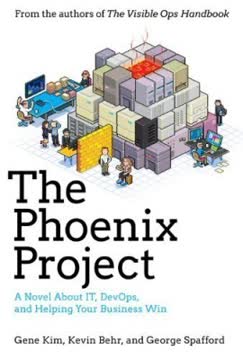

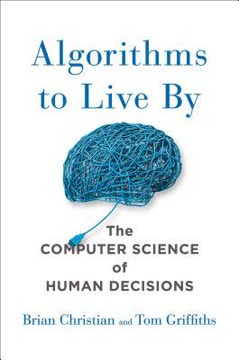

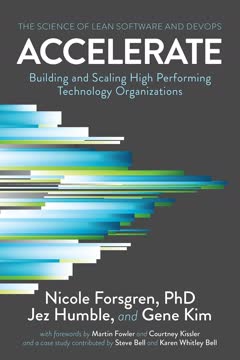
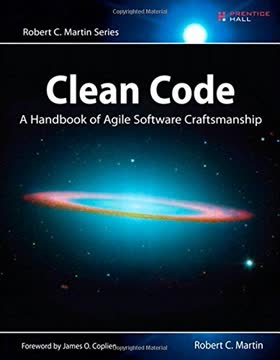

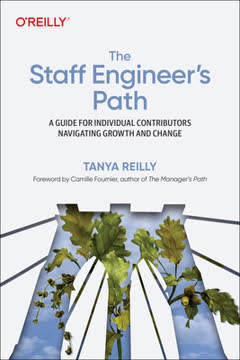
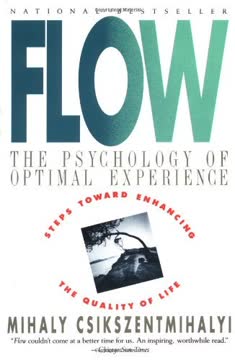
Download PDF
Download EPUB
.epub digital book format is ideal for reading ebooks on phones, tablets, and e-readers.




